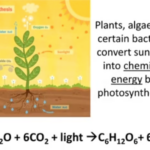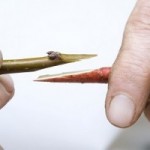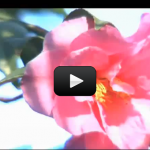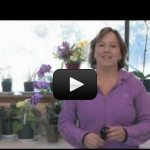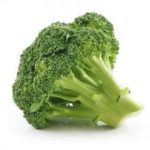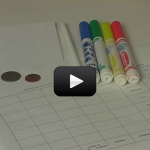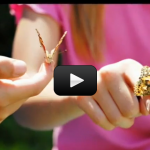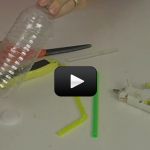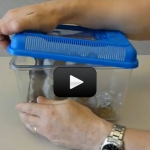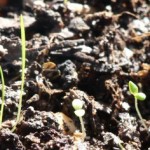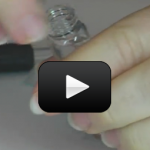Measuring Photosynthesis
Measuring Photosynthesis of a LeafAll organisms, from tigers to tulips, need energy. Even bacteria need energy. To get this energy, organisms access stored energy by eating food. Cows eat grass. Lions eat cows. But if you look closely at it, all the food energy actually can be traced back to the light from the sun.All … Continue reading "Measuring Photosynthesis" |
Three Ways to Create a Plant
If you’ve ever eaten fruits or vegetables (and let’s hope you have), you have benefited from plants as food. Of course, the plants we eat have been highly modified by growers to produce larger and sweeter fruit, or heartier vegetables. There are three basic ways to create plants with new, more desirable traits: |
Giant Veggies!
Six-foot zucchini? Ten-foot carrots? Are giant veggies just a photography trick, or are they real? The happy news is that yes, they’re real! Expert horticulturists have accumulated a great wealth of knowledge about different climates and dirt conditions. They must know about the different chemical, physical and biological properties of gardens and do multiples of … Continue reading "Giant Veggies!" |
What Color Light Do Plants Like Best?
If you’re thinking sunlight, you’re right. Natural light is best for plants for any part of the plant’s life cycle. But what can you offer indoor plants? In Unit 9 we learned how light contains different colors (wavelengths), and it’s important to understand which wavelengths your indoor plant prefers. Plants make their food through photosynthesis: … Continue reading "What Color Light Do Plants Like Best?" |
The Science of Broccoli
Broccoli, like all plants, has chlorophyll, making it green. You can really “see” the chlorophyll when you boil broccoli. This is such a simple experiment that you can do this as you prepare dinner tonight with your kids. Make sure you have an extra head of broccoli for this experiment, unless you really like to … Continue reading "The Science of Broccoli" |
Einstein’s Garden
Mass and energy are conserved. This means you can’t create or destroy them, but you can change their location or form. Most people don’t understand that the E energy term means all the energy transformations, not just the nuclear energy. The energy could be burning gasoline, fusion reactions (like in the sun), metabolizing your lunch, … Continue reading "Einstein’s Garden" |
Classifying Objects
Grab a handful of buttons. Make sure there are all different kinds and colors. |
Tracking Traits
Why do families share similar features like eye and hair color? Why aren’t they exact clones of each other? These questions and many more will be answered as well look into the fascinating world of genetics! Genetics asks which features are passed on from generation to generation in living things. It also tries to explain … Continue reading "Tracking Traits" |
Butterfly Life Cycle
Insects are not only the most diverse subgroup of arthropods, but with over a million discovered species it is the most diverse group of animals on earth. Although they can’t all be as beautiful as a butterfly, they all play important roles in their ecosystems—just think of where we would be without bees! |
Make an Insect Aspirator
Some insects are just too small! Even if we try to carefully pick them up with forceps, they either escape or are crushed. What to do? Answer: Make an insect aspirator! An insect aspirator is a simple tool scientists use to collect bugs and insects that are too small to be picked up manually. Basically … Continue reading "Make an Insect Aspirator" |
Predator-Prey: Who Eats Whom?
The way animals and plants behave is so complicated because it not only depends on climate, water availability, competition for resources, nutrients available, and disease presence but also having the patience and ability to study them close-up. We’re going to build an eco-system where you’ll farm prey stock for the predators so you’ll be able … Continue reading "Predator-Prey: Who Eats Whom?" |
Raising Orange Spotted Roaches
When you hear “roach” you might not immediately think of something that would make a good pet, but not all roaches are like the cockroaches you might have seen in your house! Species such as the Orange Spotted Roach (Blaptica dubia) make excellent insect pets: they don’t cost much, they have an interesting life cycle … Continue reading "Raising Orange Spotted Roaches" |
What Color Light Do Plants Like Best?
If you’re thinking sunlight, you’re right. Natural light is best for plants for any part of the plant’s life cycle. But what can you offer indoor plants? In Unit 9 we learned how light contains different colors (wavelengths), and it’s important to understand which wavelengths your indoor plant prefers. Plants make their food through photosynthesis: … Continue reading "What Color Light Do Plants Like Best?" |
Monocots and Dicots
Flowering plants can be divided into monocotyledons and dicotyledons (monocots and dicots). The name is based on how many leaves sprout from the seed, but there are other ways to tell them apart. For monocots, these will be in multiples of three (wheat is an example of a monocot). If you count the number of petals … Continue reading "Monocots and Dicots" |
Preparing a Wet Mount Slide
Make sure you’ve completed the How to Use a Microscope activity before you start here! Anytime you have a specimen that needs water to live, you’ll need to prepare a wet mount slide. This is especially useful for looking at pond water (or scum), plants, protists (single-cell animals), mold, etc. When you keep your specimen … Continue reading "Preparing a Wet Mount Slide" |

